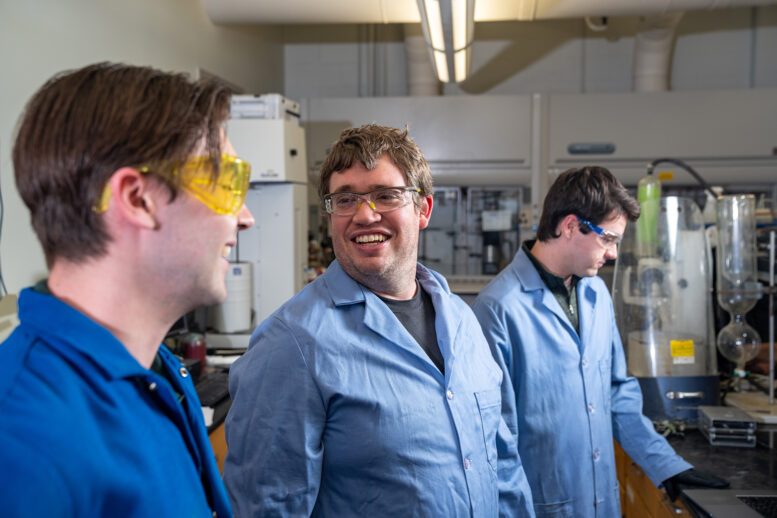From BGSU OFFICE OF MARKETING & BRAND STRATEGY
As one of the leading institutions for photochemical sciences research, Bowling Green State University continues to partner with global organizations on industry research, including NASA and Johnson & Johnson, underscoring the important role of higher education in advancing innovation.
Assisted by student researchers, Dr. Joseph Furgal, associate professor of chemistry and photochemical sciences, is currently working on projects with NASA and Creare Inc. – a research and development company specializing in the pharmaceutical, biotechnology and medical device industries – to make self-healable coolant tubing for space habitat applications. The tubing will allow for thermal fluid to continue to flow and maintain temperature instead of escaping into space when impacted.
Furgal and his team are also helping Johnson & Johnson Vision with contact lens recycling technologies, helping to combat high material costs and high levels of waste created by disposable contact lenses. Additionally, Furgal is working with an international partner to improve the long-term stability of the anti-counterfeiting fluorescent pigments used in currency and document forgery prevention worldwide.
Partnerships between industry and academia are crucial in driving innovation through shared knowledge and expertise, and BGSU researchers are frequently sought after to partner with organizations on groundbreaking research projects.
“I am grateful that BGSU is able to partner with industry on research projects,” Furgal said. “It is a mutually beneficial relationship for students to gain experience working with industry to enhance their future career prospects and for us to help solve industrial challenges that are highly visible.”
For second-year graduate student Andrew Deller, the opportunity to work and learn alongside world-class faculty like Furgal at BGSU – ranked the No. 1 public university in Ohio for student learning experiences – is invaluable.
“Working with Dr. Furgal is an incredible opportunity,” Deller said. “His expertise and knowledge attract industry projects and international attention.”
In recent years, the federal government has leveraged Furgal’s expertise to explore the feasibility of using smart sponges to remove toxic chemicals from waterways. Continuing his research, Furgal recently took students to Oak Ridge National Laboratory, among the world’s premier research institutions, to utilize its world-class neutron scattering facility.
“Through laser light scattering, we knew our photo-responsive gels, which can swell to more than 400% of their initial volume during absorption, could be shrunk under ultraviolet light,” Furgal said. “However, light and X-ray-based scattering techniques may adversely affect the material and results. Neutron scattering allows a more accurate understanding of the differences between gel phases.”
Data from the neutron scattering is currently being analyzed, which will enable Furgal and his team to more accurately design the smart sponges to swell and absorb toxic contaminants.
“It’s about more than getting an output,” Deller said. “It’s important and beneficial to know how the machines work and why we’re getting the results we are. My hands-on learning is all-encompassing.”

